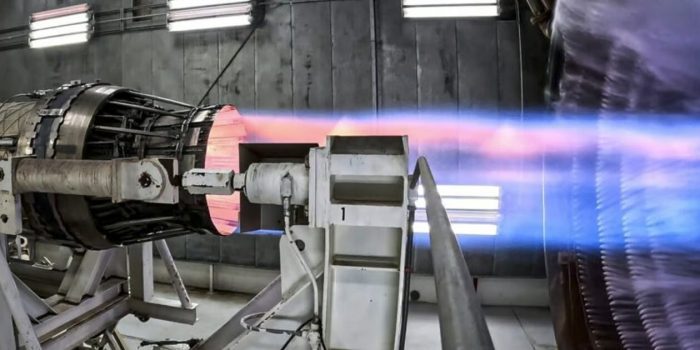Hermeus is progressing rapidly in its quest to build a hypersonic aircraft, recently initiating tests on a precooler integrated with a Pratt & Whitney F100 jet engine for its Quarterhorse Mk 2 prototype. This marks a significant step as the company aims to surpass the speeds of the iconic SR-71 Blackbird by developing a series of specialized prototypes, each addressing different flight challenges incrementally.
The development strategy of Hermeus involves constructing multiple prototypes to systematically tackle specific aspects of hypersonic flight. The initial prototype, Quarterhorse Mk 0, was designed only for taxi tests to facilitate ground evaluations while the subsequent Mk 1 was in production.

Mk 1’s primary function is to perform basic flight operations, such as takeoffs and landings, enabling early flight testing concurrent with the development of Mk 2. The Mk 2 prototype is intended to achieve supersonic speeds, providing crucial data for constructing more advanced hypersonic models.
A critical component in this progression is the integration of a precooler with the F100 engine. The precooler, tested at Edwards Air Force Base, is essential for managing the extreme heat generated by air intake at supersonic speeds, thus preventing engine overheating and maintaining efficiency at speeds beyond Mach 2.5.

These tests are fundamental for gathering data to refine Hermeus’ Chimera engine, a turbine-based combined cycle (TBCC) engine. The Chimera engine is designed to operate using a conventional turbine at lower Mach speeds before transitioning to a ramjet mode for speeds exceeding Mach 5.
Despite the advancements, the Quarterhorse Mk 2’s initial flights will be limited to around Mach 2.5. Achieving higher speeds will necessitate the completed Chimera engine, intended for the subsequent Mk 3 prototype. The ultimate goal is to create an air-breathing hypersonic engine capable of seamless transitions from runway takeoff to hypersonic speeds, eliminating the need for rockets or carrier aircraft.
Hermeus co-founder and chief technologist, Glenn Case highlighted the significance of developing a comprehensive air-breathing hypersonic engine. This technology is pivotal for realizing the company’s vision of hypersonic aircraft that can operate using conventional runways and achieve unprecedented speeds, setting new benchmarks in aviation technology.
“Air-breathing engines are critical to Hermeus’ goal of rationalizing hypersonic aircraft,” said Hermeus and Glenn Case. “By making a full-range, air-breathing hypersonic engine, Hermeus is setting the stage for aircraft that are capable of taking off from a regular runway and accelerating up to hypersonic speeds. No rockets or motherships required.”


